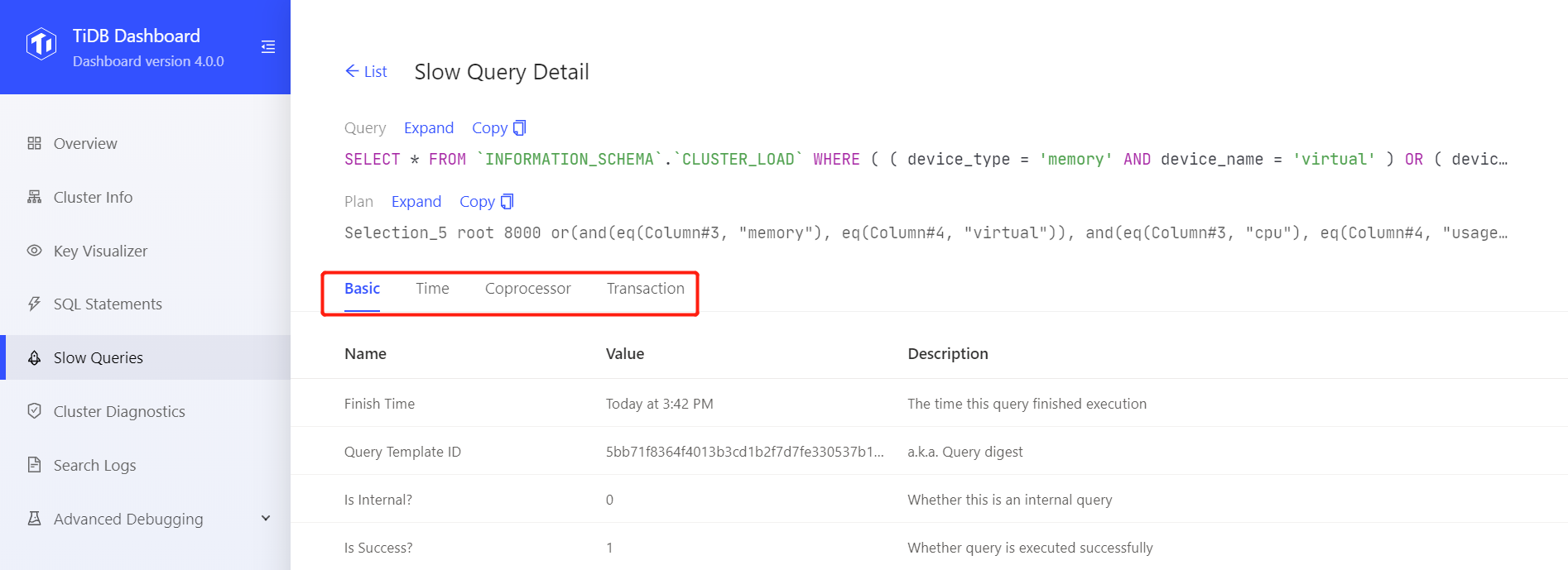Slow Queries Page of TiDB Dashboard
On the Slow Queries page of TiDB Dashboard, you can search and view all slow queries in the cluster.
By default, SQL queries with an execution time of more than 300 milliseconds are considered as slow queries. These queries are recorded in the slow query logs and can be searched via TiDB Dashboard. You can adjust the threshold of slow queries through the tidb_slow_log_threshold session variable or the slow-threshold TiDB parameter.
Access the page
You can use one of the following two methods to access the slow query page:
- After logging into TiDB Dashboard, click Slow Queries on the left navigation menu:
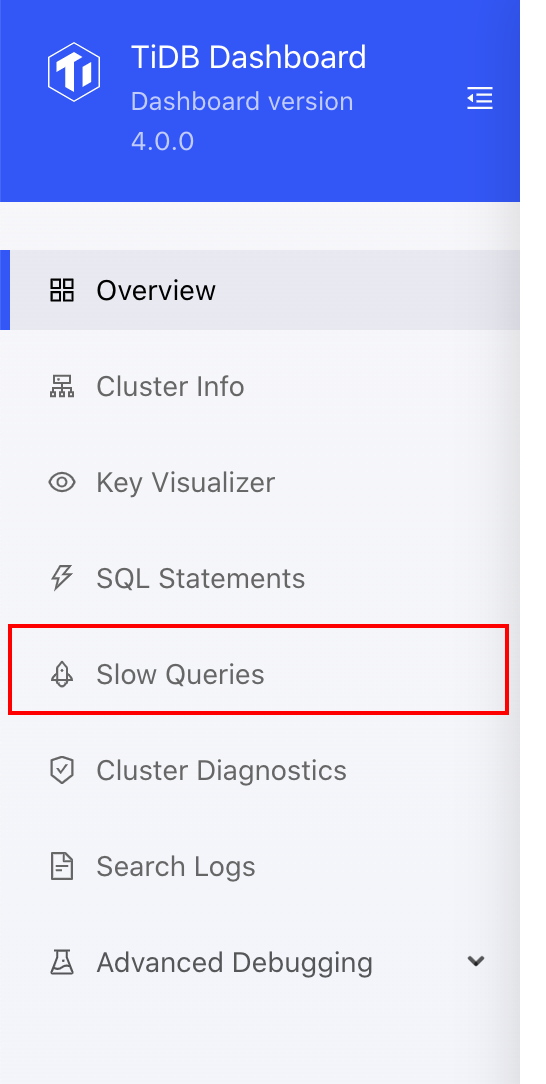
- Visit http://127.0.0.1:2379/dashboard/#/slow_query in your browser. Replace
127.0.0.1:2379with the actual PD address and port.
All data displayed on the slow query page comes from TiDB slow query system tables and slow query logs. See slow query logs for details.
Change Filters
You can filter slow queries based on the time range, the related database, SQL keywords, SQL types, the number of slow queries to be displayed. In the image below, 100 slow queries over the recent 30 minutes are displayed by default.
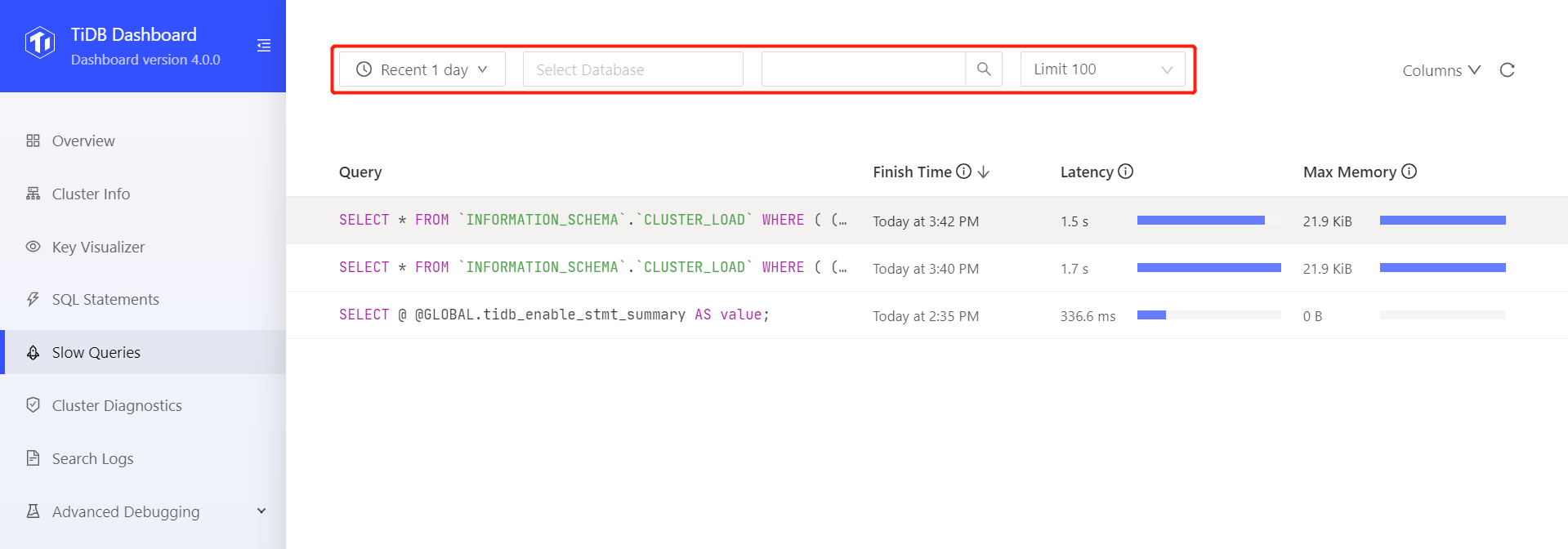
Display More Columns
Click Columns on the page and you can choose to see more columns. You can move your mouse to the (i) icon at the right side of a column name to view the description of this column:
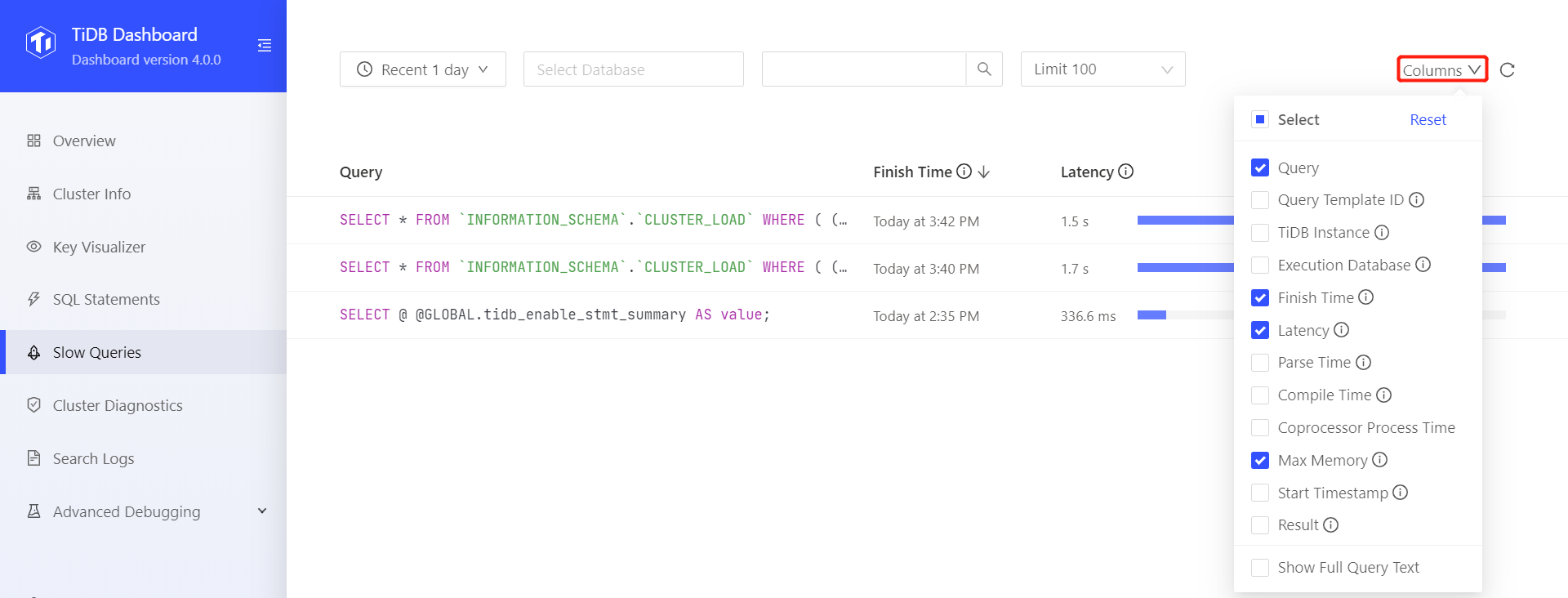
Sort by Column
By default, the list is sorted by Finish Time in the descending order. Click column headings to sort by the column or switch the sorting order:

View execution details
Click any item in the list to display detailed execution information of the slow query, including:
- Query: The text of the SQL statement (see area 1 in the image below);
- Plan: The execution plan of the slow query. See Understand the Query Execution Plan to learn how to read the execution plan (see area 2 in the image below);
- Other sorted SQL execution information (see area 3 in the image below).
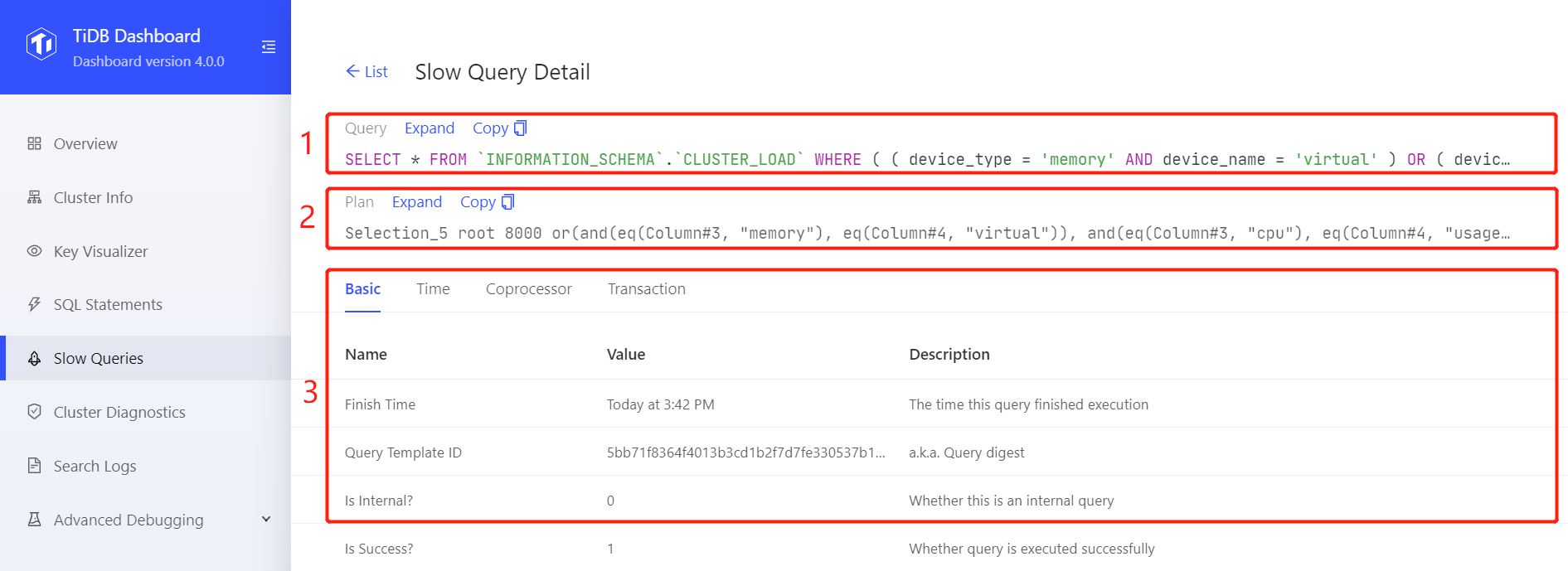
Click the Expand link to show the detailed information of an item. Click the Copy link to copy the detailed information to the clipboard.
Click the corresponding tab titles to switch information of different sorted SQL executions.
